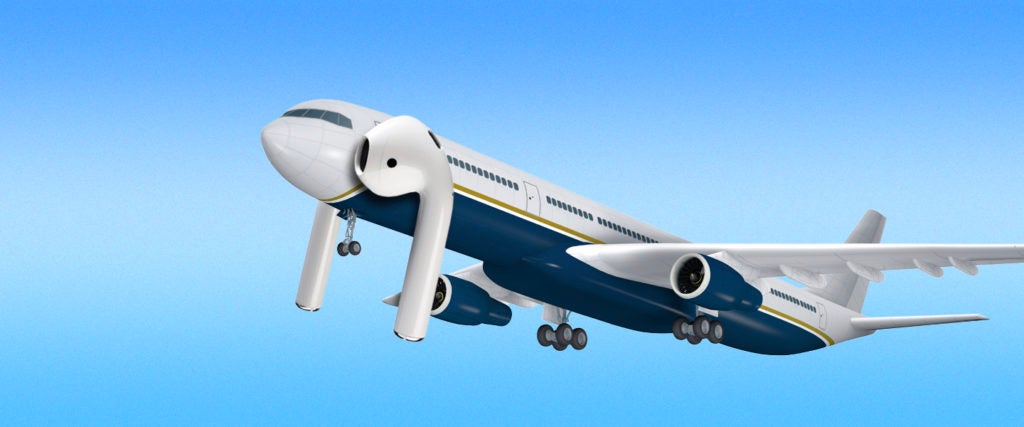I thought I was finally “getting with the times” when I received a pair of AirPods last Christmas. I never really wanted them as they seemed easy to lose — and I preferred the obvious look of preoccupation a corded pair of earbuds provides — but nevertheless, I’ve used them regularly since. In fact, I’ve entirely lost track of whatever audio devices I used before them. They’re part of me now.
This is usually fine and dandy — until I get on an airplane. On the back of most seats is a catalogue of digital delights, accessible to me only through a headphone jack lest I deign to watch Coraline without any audio. The problem is, I no longer have anything with a headphone jack. I don’t even have a pair of headphones with a cord at all. What’s the point of Bluetooth technology or Apple’s “lightning” system if I can’t use it in the one place I need it most?
Let me start by saying that complaining that I can’t use my AirPods to watch movies on an airplane is the most banal, privileged type of problem I can think of. I’m embarrassed about it! I don’t recognize the yuppy in the mirror! But in my defense, we’ve reached a point where engaging with Apple products is practically compulsory. There are over 1 billion active iPhone users worldwide, and according to Backlinko, iPhones dominate 65 percent of smartphone sales. There are millions upon millions of iPhone users across income levels, too.
But once you become plugged into the iPhone world, Apple forces you to stay within it. After Apple dropped the headphone jack in 2016, its devotees could only use either Bluetooth products or Apple’s own headphone offerings that fit within the lightning port. While us consumers may have stupidly bought into this commitment, much of the rest of the world hasn’t yet. And so, when we get on an airplane and wish to utilize the in-flight entertainment, our AirPods and lightning-port headphones are essentially useless. Given that a new pair of AirPods go for around $150 to $200 depending on the model, on top of whatever exorbitant price you’re paying for the iPhone itself, their uselessness on an airplane feels truly insulting.
Luckily, this is something that could soon change. As SimpleFlying reported in July, United Airlines ordered the production of 270 new aircraft with a suite of updated amenities, including Bluetooth compatibility with their in-flight entertainment. This feature has already been rolled out on a handful of their planes — United hopes to update all of their planes with Bluetooth by 2025 — and is currently an option on some of Qatar Airways flights as well.
In the meantime, Bluetooth users have the option of purchasing an adapter that plugs into a headphone jack. There are also adapters that allow you to plug a pair of lightning headphones into a headphone jack outlet. Alternatively, you could do as I recently did and buy a shitty pair of headphones from a Walgreens on the way to the airport, only to discover that one earbud doesn’t even work.
Obviously, the downside to any of these choices is that you have to buy something and be further burdened with more electronic bullshit. Some airlines give out free headphones or charge a few bucks to buy a pair off of them, but both the free and paid versions are typically garbage, and they make the movie-watching experience more painful than it’s worth.
Maybe you’re smarter than me, though, and you already have an additional pair of traditional headphones handy. Still, you must suffer with the knowledge that despite Apple’s promise to “free” us from cords, we’re only further imprisoned by our dependence upon their products and, like total fools, carry both corded headphones and AirPods. My guess is it won’t get much better when every airplane offers a Bluetooth (or lighting port) compatible option either. Because by that point, I’m sure Apple will have already bullied us into buying another entirely incompatible product.

